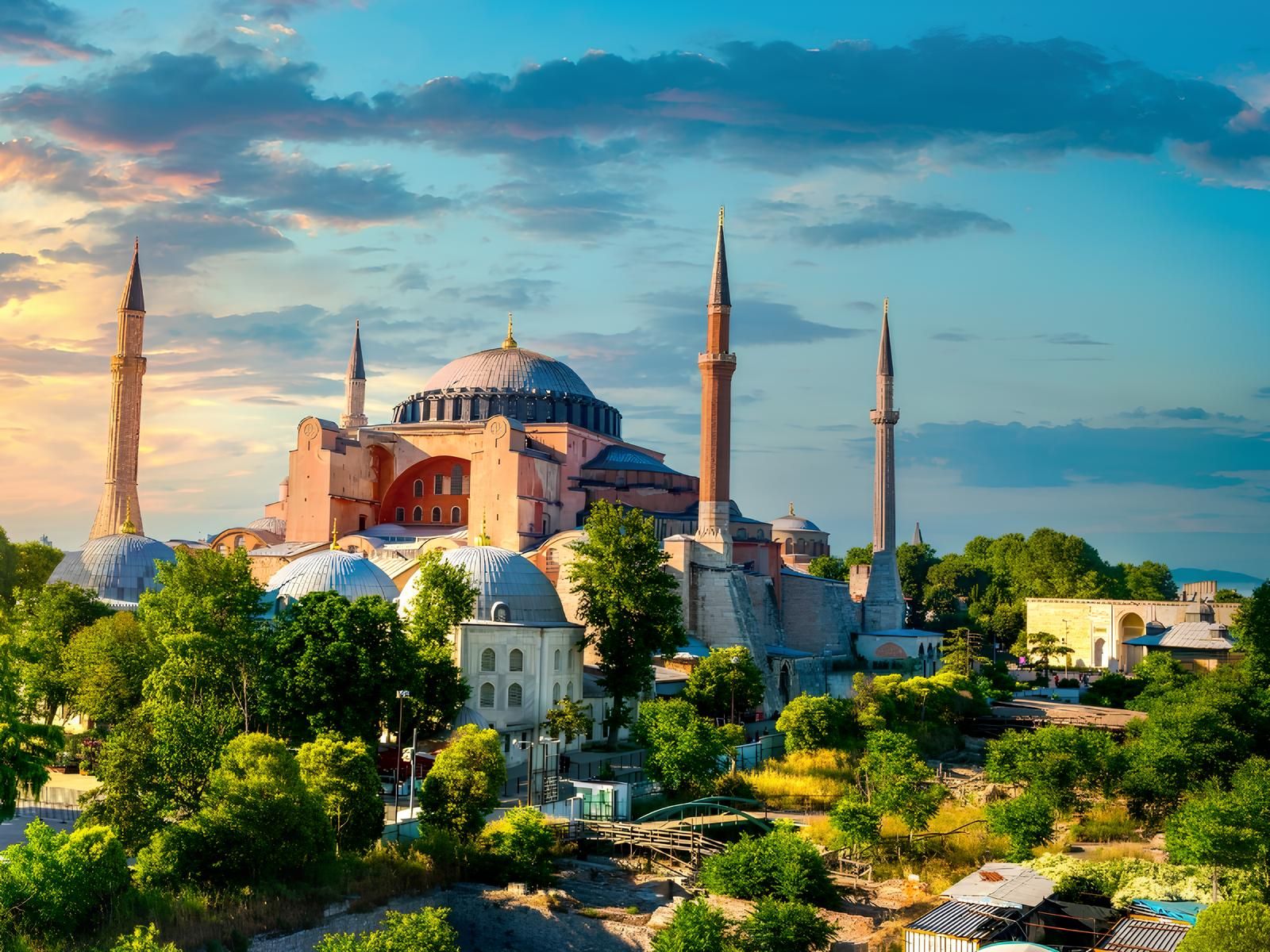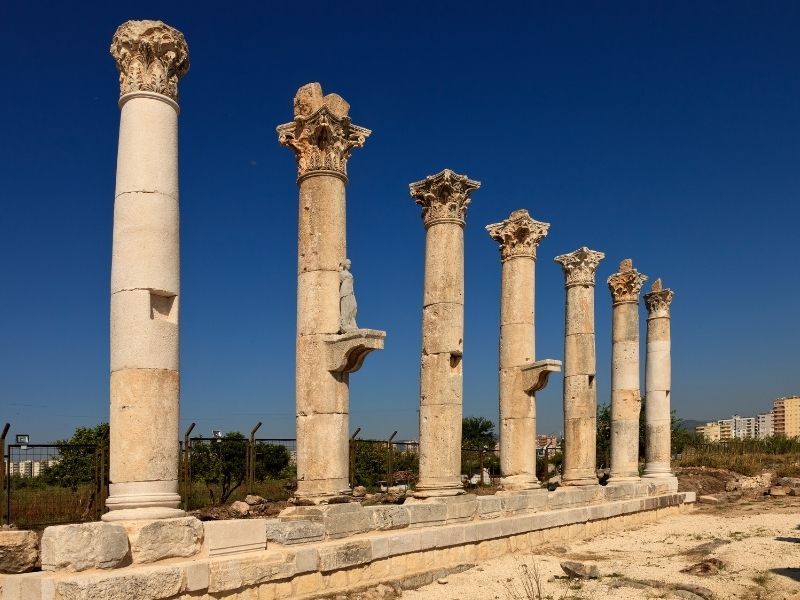Historical and Touristic Beauties of Istanbul
Guide in Türkiye

Istanbul, a city that straddles two continents and countless eras, is a treasure trove of historical and touristic wonders. With its unique blend of ancient and modern, the city offers a captivating journey through time, where every street corner reveals a new layer of its rich heritage. From the magnificence of the Hagia Sophia and the opulence of the Topkapi Palace to the vibrant energy of the Grand Bazaar, Istanbul's historical sites are as diverse as its cultural tapestry. Beyond the iconic landmarks, the city’s diverse neighborhoods, bustling markets, and scenic Bosphorus views provide an immersive experience that reflects its storied past and dynamic present. Join us as we explore the historical and touristic riches of Istanbul, uncovering the stories and landmarks that make this city a timeless destination.
Istanbul's Most Prominent Periods Throughout History
Istanbul, formerly known as Byzantium and later Constantinople, has been a pivotal center of civilization through various historical periods. Founded as Byzantium around 660 BCE, it flourished as a Greek city-state before becoming the capital of the Eastern Roman Empire under Emperor Constantine the Great in 330 CE and subsequently known as Constantinople. This period saw the city become a beacon of Christianity and a hub of Byzantine culture, marked by architectural marvels such as the Hagia Sophia. In 1453, the city transitioned to the Ottoman Empire under Sultan Mehmed II, transforming into Istanbul and emerging as a major Islamic center and a crossroads of trade and culture. The Ottoman era, lasting until the early 20th century, was characterized by significant expansion, architectural grandeur, and cultural prosperity. The 20th century ushered in the modern Republic of Türkiye, with Istanbul evolving into a vibrant, cosmopolitan city that bridges the ancient and the contemporary. Each of these periods has left an indelible mark on Istanbul, shaping it into the dynamic and historically rich city it is today.
Historical Buildings: Hagia Sophia, Topkapi Palace and More
Istanbul's historical skyline is adorned with architectural masterpieces that reflect its rich and diverse past. The Hagia Sophia, originally constructed as a cathedral in 537 CE under Byzantine Emperor Justinian I, is a marvel of architectural ingenuity and religious significance. Its vast dome and intricate mosaics have captivated visitors for centuries, serving as a cathedral, mosque, and now a museum, symbolizing Istanbul’s complex and multi-layered history.
The Topkapi Palace, once the opulent residence of Ottoman sultans, is another gem in Istanbul's historical crown. Built in the mid-15th century, it served as the administrative and ceremonial center of the Ottoman Empire for nearly 400 years. The palace complex is renowned for its stunning courtyards, richly decorated rooms, and invaluable collections, including the famous Topkapi Dagger and the Spoonmaker’s Diamond.
Adding to Istanbul’s architectural splendor are other significant sites such as the Blue Mosque, known for its striking blue tiles and six minarets, and the Basilica Cistern, an ancient underground reservoir with its forest of columns and hauntingly beautiful atmosphere. These landmarks, along with the Chora Church and its exquisite frescoes, collectively showcase Istanbul's unique historical evolution and its role as a bridge between continents and cultures.
Istanbul's Most Iconic Mosques and Museums
Istanbul, where East meets West, is home to some of the most iconic mosques and museums that reflect its rich cultural and historical tapestry.
The Sultan Ahmed Mosque, commonly known as the Blue Mosque, is renowned for its stunning blue-tiled interior, grand domes, and six minarets. Built-in the early 17th century, it remains one of the most recognized symbols of Istanbul, offering visitors a glimpse into Ottoman architectural splendor and spiritual significance.
The Hagia Sophia, initially constructed as a cathedral and later converted into a mosque, is a masterpiece of Byzantine architecture. Its vast dome, lavish mosaics, and historical significance make it a must-visit for anyone interested in Istanbul's religious and architectural history.
Among Istanbul’s esteemed museums, the Topkapi Palace Museum stands out, housed in the former residence of Ottoman sultans. The museum showcases an extensive collection of artifacts, including imperial treasures, manuscripts, and ornate calligraphy.
The Istanbul Archaeological Museums, comprising three separate museums, house an impressive array of artifacts from ancient civilizations, including the famed Alexander Sarcophagus and numerous relics from the Greek and Roman periods.
Lastly, the Museum of Turkish and Islamic Arts, located in the Ibrahim Pasha Palace, offers a deep dive into Turkish and Islamic art, featuring intricate carpets, manuscripts, and calligraphy.
Must-See Places for Local and Foreign Tourists
Istanbul offers a wealth of attractions that captivate both local and foreign tourists, blending historical grandeur with vibrant modern culture.
Hagia Sophia: This iconic structure, with its majestic dome and stunning mosaics, serves as a profound symbol of Istanbul’s rich history, transitioning from a cathedral to a mosque and now a museum. Its architectural brilliance and historical significance make it a top destination for visitors.
Topkapi Palace: Once the opulent residence of Ottoman sultans, Topkapi Palace provides an immersive glimpse into the grandeur of the Ottoman Empire. Highlights include the Harem quarters, the Imperial Treasury, and the palace’s expansive courtyards.
Sultan Ahmed Mosque (Blue Mosque): Known for its striking blue tiles and impressive minarets, this mosque remains a central religious site and a masterpiece of Ottoman architecture, drawing admiration from visitors worldwide.
Grand Bazaar: One of the world’s oldest and largest covered markets, the Grand Bazaar is a bustling hub of activity where visitors can shop for everything from spices and textiles to jewelry and ceramics, all within its labyrinthine alleys.
Basilica Cistern: An ancient underground reservoir with atmospheric lighting and a forest of columns, the Basilica Cistern provides a unique and captivating experience, revealing Istanbul’s engineering marvels of the Byzantine era.
Galata Tower: Offering panoramic views of Istanbul's skyline and the Bosphorus Strait, this medieval tower is a popular spot for sightseeing and photography.
Istiklal Avenue: A lively pedestrian street in the heart of Istanbul, Istiklal Avenue is lined with historic buildings, shops, cafes, and theaters, embodying the city’s vibrant urban culture.
Chora Church: Renowned for its exquisite Byzantine mosaics and frescoes, the Chora Church offers a glimpse into early Christian art and architecture, making it a must-visit for art enthusiasts.
Bosphorus Cruise: A boat tour along the Bosphorus Strait provides breathtaking views of Istanbul’s waterfront palaces, historical fortresses, and stunning skyline, offering a unique perspective on the city’s geographic and historical significance.
Historical Districts of Istanbul
Istanbul's historical districts are a mosaic of rich cultural heritage and architectural splendor, offering a distinct glimpse into the city’s multifaceted past. Sultanahmet, the heart of the old city, is home to iconic landmarks such as the Hagia Sophia, Topkapi Palace, and the Blue Mosque, encapsulating Istanbul's Byzantine and Ottoman grandeur. Beyoğlu, with its bustling Istiklal Avenue and the historic Galata Tower, represents the city's vibrant modern culture while retaining echoes of its past. Karaköy, a once bustling port district, has transformed into a trendy area with a blend of historical architecture and contemporary cafes. Fener and Balat offer a more intimate look at Istanbul’s diverse cultural tapestry, featuring colorful Ottoman-era houses, ancient churches, and traditional markets. In these vibrant neighborhoods, you can also find a variety of properties for sale, catering to both local and international buyers. Each district, with its unique blend of historical landmarks, architectural styles, and cultural influences, contributes to the rich, layered narrative of Istanbul's enduring legacy.
For more detailed information about Türkiye and its unique cities, you can check FOA Invest's blog post titled "Where are the Most Beautiful Places in Türkiye?".






